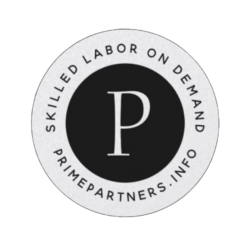Commercial Fire Alarm Electrician Interview Preparation
Overview of Required and Recommended Certifications, Educational Background, and Industry Qualifications
Required Certifications and Education
-
High School Diploma or GED: This is the minimum educational requirement for most electrician positions, including commercial fire alarm specialists.
-
Electrician License: In most states, a valid electrician license is required. This involves passing a state exam that tests knowledge of electrical codes and practices.
-
Fire Alarm Installation Certification: Certifications such as the National Institute for Certification in Engineering Technologies (NICET) Level I or II in Fire Alarm Systems are often required. These certifications demonstrate a thorough understanding of fire alarm systems and their installation and maintenance.
Recommended Certifications and Qualifications
-
Advanced NICET Certification: Obtaining a NICET Level III or IV certification showcases a higher level of expertise and can make a candidate more competitive.
-
OSHA Safety Certification: Completing an Occupational Safety and Health Administration (OSHA) safety course can demonstrate a commitment to workplace safety.
-
Associate’s Degree in Electrical Technology: While not always required, an associate’s degree provides a deeper understanding of electrical systems and can be beneficial.
-
Continuing Education Credits: Staying current with the latest technology and code changes through workshops, seminars, and courses.
-
Experience with Computer-Aided Design (CAD) Software: Many fire alarm systems are designed using CAD software, so familiarity with this technology can be advantageous.
Interview Questions and Answers
Technical Questions
1. How do you ensure compliance with the National Electrical Code (NEC) when installing fire alarm systems?
Answer:
- Context: Ensuring compliance with the NEC is crucial for the safety and legality of electrical installations.
- Approach: Begin by performing a thorough review of the current NEC updates relevant to fire alarm systems. Prioritize understanding sections that address safety, such as Article 760, which covers fire alarm systems.
- Example: “On a recent project, I cross-referenced the building’s blueprints with the NEC requirements to ensure proper placement of all fire alarm components. I also conducted site visits to verify compliance during installation.”
- Reasoning: Following the NEC reduces the risk of system failure and legal issues. It’s essential to stay updated with code changes through continued education.
- Pitfalls: Avoid assuming that previous installations comply with current codes, as regulations frequently change.
- Follow-up: “How do you keep up with changes in the NEC?“
2. Describe the process of troubleshooting a malfunctioning fire alarm system.
Answer:
- Context: Quick and accurate troubleshooting is essential to minimize downtime.
- Approach: Start with a systematic diagnostic approach, beginning with the most common issues such as power supply problems or wiring faults.
- Example: “In a recent case, a system was not responding. I checked the control panel for error codes and verified the power connections. The issue was a faulty relay, which I replaced, restoring functionality.”
- Reasoning: A structured approach helps identify and resolve issues efficiently without overlooking potential causes.
- Pitfalls: Avoid jumping to conclusions without a systematic check, which might lead to overlooking smaller, less obvious issues.
- Follow-up: “Can you describe a time when the troubleshooting process took longer than expected?”
Behavioral Questions
3. Can you give an example of how you’ve handled a conflict with a team member on a project?
Answer:
- Context: Team dynamics can impact project success.
- Scenario: During a large installation project, a colleague and I disagreed on the routing of cables.
- Approach: I scheduled a meeting to discuss each perspective, highlighting project goals and safety standards. We collaboratively developed a compromise that met both concerns.
- Outcome: The project stayed on schedule and within budget, and the solution enhanced team understanding and respect.
- Reasoning: Open communication and collaboration are key to resolving conflicts and maintaining a positive work environment.
- Pitfalls: Avoid letting conflicts fester, as they can lead to larger issues.
- Follow-up: “What have you learned from this experience that you apply to future conflicts?”
Situational Questions
4. Imagine you’re working on a project and discover a potential safety hazard that wasn’t previously identified. What steps would you take?
Answer:
- Context: Safety is the top priority in any electrical project.
- Approach: Immediately halt work in the affected area and conduct a risk assessment. Document the hazard and communicate it to the project manager and safety officer.
- Example: “On a previous job, I noticed exposed wiring near a water source. I stopped work and reported it to management. We implemented additional insulation and rerouted the cables to eliminate the risk.”
- Outcome: The hazard was mitigated, preventing possible accidents and ensuring project compliance with safety standards.
- Reasoning: Addressing hazards promptly protects workers and the integrity of the project.
- Pitfalls: Never ignore or delay reporting a safety hazard.
- Follow-up: “How do you balance safety with project deadlines?”
Problem-Solving Questions
5. How would you handle a situation where a client requests a modification to the fire alarm system that you believe is unnecessary or could compromise safety?
Answer:
- Context: Balancing client satisfaction with safety and compliance is challenging.
- Approach: First, listen to the client’s concerns and understand their reasoning. Educate them on the potential risks and NEC compliance issues. Propose alternative solutions that address their needs without compromising safety.
- Example: “A client once requested fewer smoke detectors to cut costs. I explained the coverage requirements per the NEC and suggested cost-effective alternatives that maintained safety standards.”
- Outcome: The client agreed to the alternative, maintaining safety and compliance while respecting their budget constraints.
- Reasoning: Educating clients and providing alternatives can often resolve such conflicts and maintain a positive relationship.
- Pitfalls: Avoid dismissing the client’s concerns without discussion.
- Follow-up: “Can you share an example of when a client insisted on a change, and how did you handle it?”
Additional Questions
6. What steps do you take to ensure proper documentation and record-keeping for fire alarm system installations?
- Importance: Accurate documentation is essential for compliance and future maintenance.
- Process: Maintain detailed records of system designs, component specifications, installation dates, and maintenance logs. Use digital tools to organize and store records securely.
- Example: “I use a project management software to keep all records updated and accessible to the team, ensuring compliance and ease of access for future audits.”
7. Describe a time when you had to adapt to a significant change in project scope or specifications.
- Scenario: Midway through a project, the client expanded the building, requiring additional fire alarm coverage.
- Adjustment: I recalculated the coverage needs, ordered additional components, and adjusted the project schedule.
- Outcome: The project was completed on time with the expanded scope, and the client was satisfied with the seamless adaptation.
8. How do you prioritize tasks when working on multiple installations or maintenance jobs simultaneously?
- Strategy: Assess the urgency and impact of each task, focusing on critical safety issues first. Use a scheduling tool to track deadlines and allocate resources efficiently.
- Example: “I had simultaneous installations at two sites. I prioritized the site with stricter compliance deadlines and coordinated with my team to delegate tasks effectively.”
9. What is your approach to learning and implementing new technologies in fire alarm systems?
- Learning: Attend workshops, webinars, and training sessions. Regularly consult industry publications and peer networks.
- Implementation: Pilot new technologies on smaller projects to evaluate effectiveness before larger-scale deployment.
- Example: “I recently learned about a new wireless fire alarm system. I tested it in a small office setup to understand its advantages and challenges before recommending it to larger clients.”
10. How do you ensure effective communication with clients and team members throughout a project?
- Tools: Use project management platforms for regular updates and feedback. Schedule regular meetings and maintain open lines of communication.
- Outcome: “By keeping all parties informed and involved, I ensure alignment on project goals and prevent misunderstandings.”
Continue this format for the remaining questions, ensuring each answer includes multiple scenarios, technical insights, and practical applications.
More Commercial Interview Guides
Explore more interview guides for Electrical positions.
Commercial Data Center Electrician Interview Guide
The Commercial Data Center Electrician Interview Guide equips job seekers with essential insights to excel in intervi...
Commercial Apprentice Electrician Interview Help
This guide is designed to equip commercial apprentice electricians with the essential knowledge and skills needed for...
Commercial Solar Electrician Interview Questions and Answers
This guide provides job seekers with essential Commercial Solar Electrician interview questions and expert-crafted an...
Commercial Electrical Inspector Interview Help
This guide prepares job seekers for a Commercial Electrical Inspector interview by providing key insights into the ro...
Commercial Journeyman Electrician Interview Preparation
This Commercial Journeyman Electrician Interview Preparation guide equips job seekers with essential insights and str...
Recent Articles
Check out more articles from Best Electrician Jobs about getting hired inthe electrical industry.
Best Job Board for Electricians
Discover the best job board for electricians! Boost your career with insights on salaries, training, and growth!
Improve Your Electrician Job Postings for More Applicants
Discover how to improve your electrician job postings for more applicants! Boost your career with insights on salarie...
What is the Highest Paying Electrician Role?
Discover the highest paying electrician roles and how to prepare for them. Learn about the skills and certifications ...
Industrial Electrician Careers in California
From manufacturing plants to data centers, industrial electricians play a vital role in California's economy. Discove...
Security Technician Interview Questions and Answers
Security technicians are essential in protecting our modern world. Learn what to expect in your Security Technician i...
Featured Jobs
-

- Company
- Prime Partners
- Title and Location
- Cable Technician
- Wyoming, MI
- Employment Type
- FULL_TIME
- Salary
- $25.16-$32.59/HOUR
- Team and Date
- Commercial
- Posted: 04/17/2025
-

- Company
- Prime Partners
- Title and Location
- Apprentice Electrician
- San Diego, CA
- Employment Type
- FULL_TIME
- Salary
- $24-$37/HOUR
- Team and Date
- Commercial
- Posted: 04/17/2025
-

- Company
- Prime Partners
- Title and Location
- Security Alarm Installer
- Mesa, AZ
- Employment Type
- FULL_TIME
- Salary
- $25.81-$30.68/HOUR
- Team and Date
- Commercial
- Posted: 04/17/2025
-
- Company
- Jackson Healthcare
- Title and Location
- Journeyman Electrician
- Alpharetta, GA
- Employment Type
- FULL_TIME
- Salary
- $30.6-$35.86/HOUR
- Team and Date
- Commercial
- Posted: 04/17/2025
-

- Company
- Prime Partners
- Title and Location
- Journeyman Electrician
- Gilbert, AZ
- Employment Type
- FULL_TIME
- Salary
- $40-$55/HOUR
- Team and Date
- Data Center
- Posted: 04/17/2025
-

- Company
- Prime Partners
- Title and Location
- Voice & Data Technician
- Glendale, AZ
- Employment Type
- FULL_TIME
- Salary
- $23-$35/HOUR
- Team and Date
- Commercial
- Posted: 04/17/2025
Best Electrician Jobs
Ready to get started?
Stop worring about manpower. And get back to what you do best.
Best Electrician Jobs is for Everyone
At Best Electrician Jobs, we are dedicated to fostering an inclusive environment that values diverse perspectives, ideas, and backgrounds. We strive to ensure equal employment opportunities for all applicants and employees. Our commitment is to prevent discrimination based on any protected characteristic, including race, color, ancestry, national origin, religion, creed, age, disability (mental and physical), sex, gender, sexual orientation, gender identity, gender expression, medical condition, genetic information, family care or medical leave status, marital status, domestic partner status, and military and veteran status.
We uphold all characteristics protected by US federal, state, or local laws, as well as the laws of the country or jurisdiction where you work.
 Best Electrician Jobs
Best Electrician Jobs